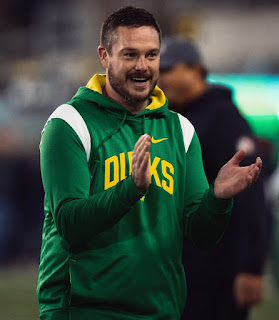In the early 2000s an organization called The Football Outsiders created football analytics, an effort by a bunch of really smart guys to measure teams, players and game decisions with objective data rather than assumptions and tradition.
They took on problems like when to punt and when to go for it; which is more effective, a small, elusive running back or a fast, heavy one, and when to go for two.
The explorations became a movement and created all kinds of new statistics and evaluation tools for coaches and teams. On the way to winning six Super Bowls, the New England Patriots became one of the first NFL organizations to embrace it. Bill Belichick, the most successful pro coach in history, always looking for better information and an edge.
Dartmouth graduate Ryan Pagnatti helped Philadelphia win a Super Bowl in 2017. He was hired originally by Chip Kelly in his last year there.
Still, crunching numbers is tricky in a sport where the collisions happen at 40 miles an hour. Some coaches embrace sports science, others resist it. Every part of the game has gotten more sophisticated, with players wearing GPS trackers in practice, sleep monitors, and analytics statistical tools like Expected Points Added and Success Rate.
A lot of what the numbers guys do is beyond the average fan, but they are changing the strategies fans see on the field in dramatic ways. Attempts to go for it on 4th down have skyrocketed. There's more confidence in the play-action pass. Scouting has improved.
The data is the data. The data is always right. But football games are played in the heat of the moment before 52,000 fans, played by flesh and blood young men who don't always perform according to the probabilities or the trends.
In the 4th quarter of a tense game, the right strategy is the one that works.
For example, in November of last year the Ducks led Oregon State 31-10 late in the third quarter but lost the game. It was one of the worst collapses in the history of the program. A win would have put them in the PAC-12 Championship.
Final score: OSU 38, UO 34.
In the first quarter the Ducks faced 4th and 3 at the Beaver 15, passed up a field goal and threw to Troy Franklin for a one-yard loss, a huge swing of emotion and momentum.
Midway through the second period Christian Gonzalez snatched away a Ben Gulbranson pass and returned it 30 yards to the OSU 30. Nix threw incomplete. Noah Whittington ran for three. A false start backed them up five. Third and 12, Bucky Irving ran for a one-yard loss.
4th and 13 from the 35, a bit outside the range of Camden Lewis. In no-man's land, the Ducks ran a play. Coverage broke down and an immobile, limited Nix was sacked for an 8-yard loss.
Great starting field position, no points.
Oregon State's defense shuts down Oregon to secure a 21-point comeback. On the day, the Ducks would go 0-5 on 4th downs.https://t.co/1eXMyZBPT6
— Dale Bliss (@DSH_Newton) June 8, 2023
With 9:39 to go in the 4th quarter the Ducks faced 4th and 1 on the 29, leading by a field goal. A banged-up Nix kept, but the Beav defensive end stayed home and stoned the play, a loss of one and another turnover on downs.
Coach made a series of decisions that were analytically sound but psychologically disastrous. As the game progressed the Ducks played increasingly tense, discouraged, confused football.
Analytics said Oregon should go for it in every one of those failed five attempts. But analytics has its limits. The numbers don't know that Bo Nix was playing on one leg. After being hurt in the Washington game two weeks earlier he stayed in the lineup, a gutty and courageous effort by him.
That forced him to work without his best weapon as a quarterback, his escapability and knack for creating plays by putting the defense in a bind. Nix's injury limited the Oregon running game too. Opponents could ignore the keeper, key on Irving and Whittington.
Those deficits don't show up in the math. With the offense limited and Oregon's defense reeling, points became more precious. Taking the points and stacking up a series of successful outcomes mattered way more than normal.
Analytics are a tool, and a smart coach has to know when to go with his gut. He has to know what poker players call the Total Table Situation; how long until the blinds go up, how many chips I have, the likelihood that my opponent might fold, when to make a bold gamble or a safe fold.
For a coach, that instinctive calculation has to be made in seconds:
How reliable is my field goal kicker with this much pressure? How well is my defense playing? Do we have a play? Is it going to work with the personnel I have right now?
It has to be about more than the numbers. A great coach has to know the reality of the moment and what his players can and can't do, with the play clock winding down to seven.
Going for it had worked for Oregon all year, but with Nix's injury those big gambles weighed out differently. The Ducks didn't have as many outs, options and outcomes that would produce a successful play. And the opponent knew it.
The Beavers deserve credit for a stirring comeback, but every one of those close decisions didn't work out for Lanning. In his second year, he'll have a greater command of those situations. You can bet he's analyzed them thoroughly over the off season, not only from an analytics viewpoint but in terms of X's and O's and technique.

No comments:
Post a Comment